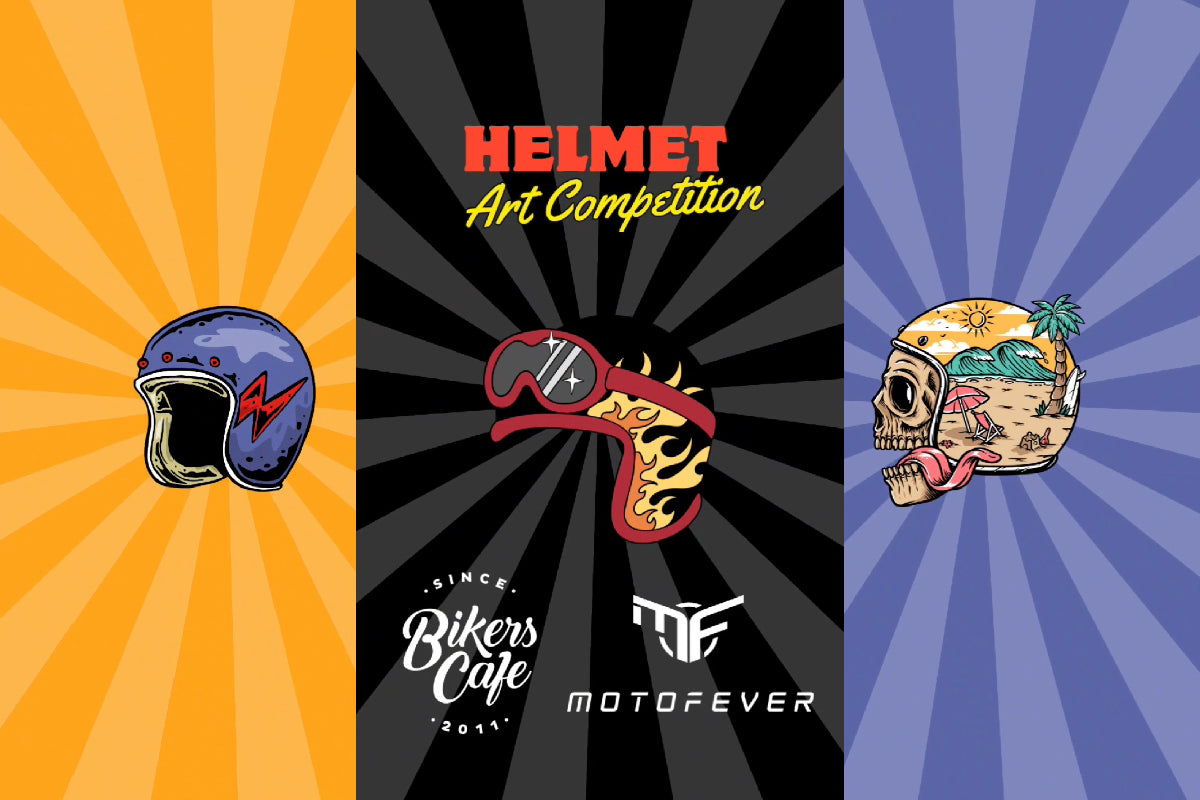The Evolution of Motorcycle Helmets: From Classic to Modern Designs
Motorcycle helmets have evolved significantly since their inception, driven by the relentless pursuit of safety, comfort, and style. This evolution reflects advancements in technology, materials, and design philosophies. Brands like AGV, Bell, and Shark have been at the forefront of this evolution, each contributing to the development of helmets that not only protect riders but also enhance their riding experience. This blog explores the journey of motorcycle helmets from their classic origins to their modern, sophisticated forms.
Early Beginnings: The Classic Era
The concept of a motorcycle helmet can be traced back to the early 20th century when the need for head protection became apparent with the rising popularity of motorcycling. The first helmets were rudimentary, often made of leather and providing minimal protection. These early helmets were more about comfort and keeping the head warm than providing significant impact resistance.
AGV's Classic Helmets

Founded in 1947, AGV (Amisano Gino Valenza) quickly became synonymous with motorcycle helmet innovation. The early AGV helmets were basic yet functional, reflecting the standards of the time. These helmets primarily offered protection against minor impacts and weather conditions. A leather protector modeled on wooden molds and left to dry for an extended period to obtain a rigid, protective shell. It had a soft, padded inner lining for comfort and to increase impact absorption.
Bell's Early Innovations

Bell Helmets, established in 1954, revolutionized the helmet industry with the introduction of the Bell 500. This helmet featured a fiberglass shell, which was a significant advancement over the leather helmets of the past. The 500 set new standards for safety and became a benchmark for future designs.
Shark's Entry

Shark Helmets, founded in 1986, by . the Teston brothers, two motorcycle enthusiasts, decided to create the helmet brand They entered the market with a strong focus on safety and performance. Although a relatively new player compared to AGV and Bell, Shark quickly gained recognition for its innovative designs and commitment to riders. Based in Marseille, in the south of France, the company quickly distinguished itself through its commitment to competition and innovation. They created helmets that are constantly superior to the standard to ensure optimal levels of performance and safety.

Technological Advancements: The Transition to Modern Designs
The 1970s and 1980s saw significant advancements in helmet technology. The introduction of new materials, such as polycarbonate and advanced composites, allowed for lighter and stronger helmets. Additionally, the development of impact-absorbing liners, ventilation systems, and aerodynamic shapes marked the transition from classic to modern helmet designs.
AGV's Technological Leaps

AGV continued to innovate with models like the AGV X3000, worn by legendary racer Giacomo Agostini. This helmet featured improved aerodynamics and better ventilation, catering to the needs of professional racers and enthusiasts alike. AGV's commitment to safety and performance was further solidified with the Pista GP model, a flagship helmet that incorporates carbon fiber construction, advanced ventilation, and a comprehensive safety system.
Bell's Modern Era

Bell Helmets continued to push the boundaries of helmet technology with the introduction of the Bell Star in the 1970s. The Star was one of the first full-face helmets, offering superior protection compared to open-face designs. In the modern era, the Bell Race Star Flex showcases the brand's commitment to safety and innovation. This flagship model features a three-layer impact liner, a lightweight composite shell, and advanced aerodynamics.
Shark's Cutting-Edge Designs

Shark Helmets has consistently focused on integrating advanced technology into their designs. The Shark Race-R Pro is a prime example of their innovation. This flagship helmet is constructed from carbon aramid fibers, providing exceptional strength and lightness. It also features a multi-density EPS liner for improved impact absorption and a sophisticated ventilation system for optimal airflow.
The Modern Landscape: Safety and Style
Today's motorcycle helmets are a testament to decades of innovation and development. Modern helmets combine state-of-the-art materials, advanced safety features, and ergonomic designs to provide unparalleled protection and comfort.
AGV's Current Offerings
AGV's latest models, such as the AGV Pista GP RR, continue to set benchmarks in the industry. The Pista GP RR incorporates the latest advancements in materials, aerodynamics, and safety technologies, making it a top choice for professional racers and serious enthusiasts. The K- Series of helmets, K1-S, K3 and K6-S are all equipped with state of the art refinement over the period time, providing comfort, style and safety.
Bell's Contemporary Models
Bell's lineup includes the Bell Custom 500, Qualifier DLX MIPS, etc. which exemplifies the brand's dedication to rider safety and comfort. Safety is enhanced by the inclusion of the MIPS energy management system. Removable/washable anti-bacterial interior & Transition Adaptive Visors just a few features innovated into the lineup of helmets.
Shark's Modern Innovations
Shark's modern helmets, like the Shark Spartan GT, offer a perfect blend of safety, performance, and style. The Spartan GT features a multi-composite shell, a high-performance ventilation system, and a comfortable, ergonomic fit. The innovative safety LED system on the Skwal - i3, tried and tested since the first version of the SKWAL, has been redesigned with the addition of active brake lights as standard. Thanks to the integration of a triaxial accelerometer, you enjoy the benefit of smart brake lights on your helmet without the need for cables or Bluetooth!
Conclusion
The evolution of motorcycle helmets from classic to modern designs showcases the industry's relentless pursuit of safety, innovation, and style. Brands like AGV, Bell, and Shark have been instrumental in driving these advancements, continually pushing the boundaries to create helmets that protect and enhance the riding experience. As technology continues to evolve, we can expect even more groundbreaking developments in the world of motorcycle helmets, ensuring that riders are safer and more comfortable than ever before.



